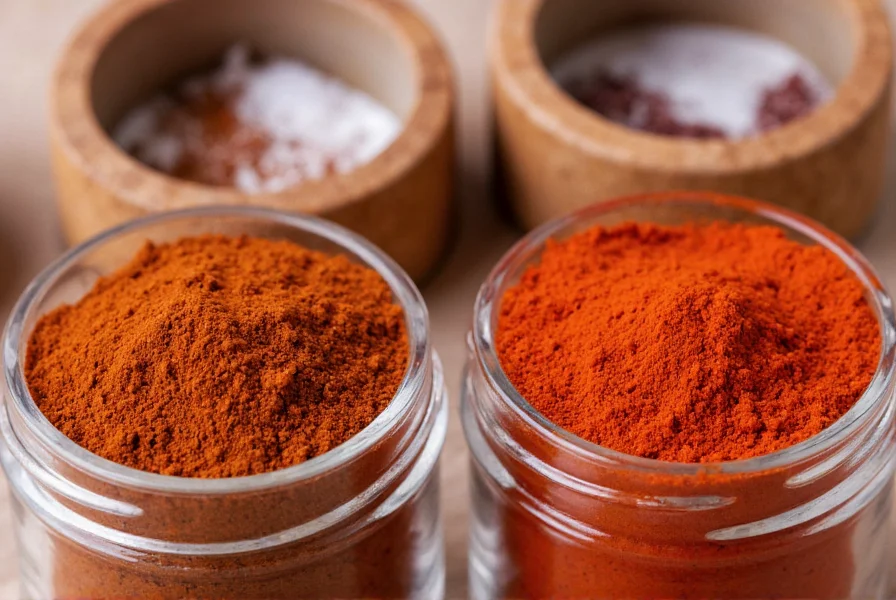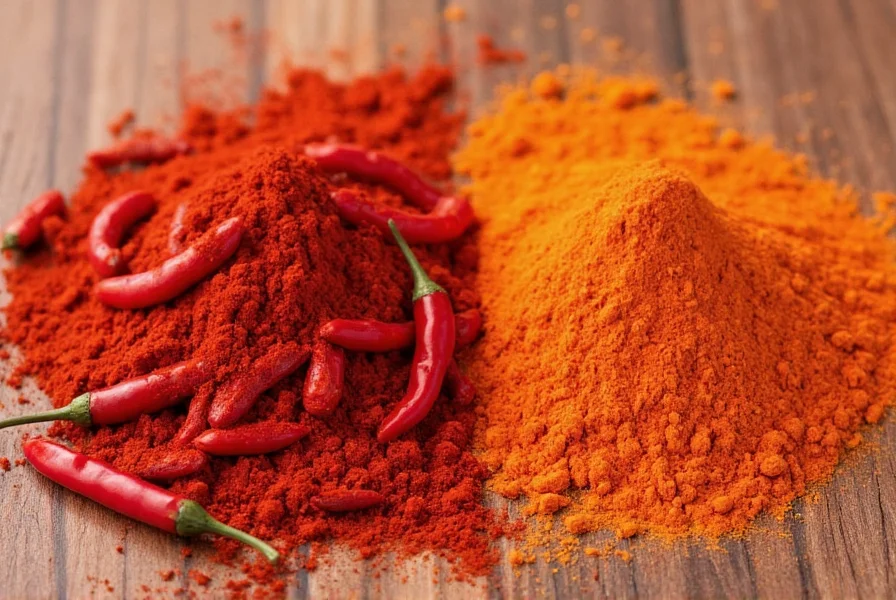Understanding the distinction between chili powder and cayenne powder is essential for precise cooking and flavor development. Many home chefs mistakenly use these terms interchangeably, leading to unpredictable results in recipes. This comprehensive guide clarifies their botanical origins, flavor profiles, heat levels, and practical culinary applications to help you make informed seasoning decisions.
What Exactly Is Chili Powder?
Chili powder represents one of the most misunderstood spice categories in American pantries. Despite its name, commercial chili powder rarely contains just ground chilies. Most store-bought varieties blend multiple dried chilies (typically ancho, pasilla, or New Mexico peppers) with complementary spices including cumin, garlic powder, oregano, and sometimes salt. This creates a complex flavor profile with earthy, smoky notes and mild to moderate heat.
The heat level of standard chili powder ranges from 500 to 1,500 Scoville Heat Units (SHU), making it approachable for most palates. Regional variations exist—Texas-style chili powder emphasizes pure ground chilies with minimal additives, while commercial blends often include fillers. When examining labels, "chili powder" without additional descriptors usually indicates this blended version, whereas "ground chili" suggests a single-chili product.

Understanding Cayenne Powder Composition
Cayenne powder delivers a completely different experience. Made exclusively from ground cayenne peppers (Capsicum annuum), this single-ingredient spice provides consistent, intense heat without additional flavor components. Cayenne peppers measure between 30,000 and 50,000 SHU on the Scoville scale—approximately 30 times hotter than standard chili powder blends.
The pure cayenne variety contains no additives, though some commercial products may include anti-caking agents like silicon dioxide. Its flavor profile features sharp, immediate heat with subtle fruity undertones, but lacks the complexity of blended chili powders. Professional chefs often prefer pure cayenne for precise heat control in sauces, marinades, and spice rubs where additional flavors would interfere with the intended profile.
Comparative Analysis of Key Characteristics
| Characteristic | Chili Powder | Cayenne Powder |
|---|---|---|
| Primary Composition | Blend of ground chilies + spices (cumin, garlic, oregano) | Pure ground cayenne peppers |
| Heat Level (Scoville) | 500-1,500 SHU | 30,000-50,000 SHU |
| Flavor Profile | Earthy, smoky, complex with multiple notes | Sharp, immediate heat with subtle fruitiness |
| Typical Culinary Use | Chili con carne, taco seasoning, Southwest dishes | Hot sauces, Cajun/Creole cooking, heat boosts |
| Substitution Ratio | 1 tsp chili powder = 1/8-1/4 tsp cayenne | 1 tsp cayenne = 4-8 tsp chili powder |
Practical Usage Guidelines for Home Cooks
When developing recipes, understanding when to reach for each spice prevents culinary disasters. Chili powder works best in dishes requiring layered flavors—think chili con carne, enchilada sauces, or Southwest-inspired rubs. Its complex profile enhances rather than dominates. For authentic Texas-style chili, seek "pure ground chili" without additives.
Cayenne powder shines when you need pure heat without additional flavors. Add it sparingly to hot sauces, Cajun dishes, or when boosting heat in marinades where competing flavors would compromise the intended profile. When substituting between them, remember that cayenne is approximately 30 times hotter—start with 1/8 teaspoon cayenne for every teaspoon of chili powder called for, then adjust to taste.
Storage Recommendations for Optimal Freshness
Both spices lose potency over time but require slightly different storage approaches. Keep chili powder in an airtight container away from light and heat, as its additional ingredients (particularly garlic and cumin) degrade faster than pure chilies. Properly stored, it maintains quality for 6-12 months.
Cayenne powder, being a single ingredient, retains heat longer but still benefits from cool, dark storage. Its vibrant red color fades as it ages, providing a visual freshness indicator. For extended shelf life, consider freezing either spice in an airtight container—this preserves volatile compounds responsible for both flavor and heat.
Common Misconceptions Clarified
Many cooks believe "chili powder" and "chile powder" are different products—they're not; spelling varies regionally. Similarly, "red pepper flakes" aren't interchangeable with either; they provide texture and uneven heat distribution. Understanding these distinctions helps when following international recipes where terminology differs.
Professional kitchens often maintain both spices for specific applications: chili powder for foundational flavor in slow-cooked dishes, cayenne for precise heat adjustments in finishing sauces. This dual approach gives chefs maximum control over both flavor complexity and heat intensity.











 浙公网安备
33010002000092号
浙公网安备
33010002000092号 浙B2-20120091-4
浙B2-20120091-4